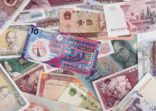Active share has often been used to determine whether an actively-managed fund is actually a “closet benchmark-hugger”, a label that has gained importance as the active/passive debate heats up.
Active share measures how far the composition of a fund’s portfolio strays from its benchmark. Managers stray by using different weightings, by adding securities not included in the benchmark or by not including those that are.
A high active share means that the fund manager largely ignores the composition of the benchmark index in building their portfolio.
A low active share means that the fund manager doesn’t stray from the index by much, which earns them the label “benchmark-hugger”.
There is no agreed-upon limit below which a fund manager is considered a “benchmark-hugger”, although some analysts use 60%. Other factors such as tracking error are also taken into consideration.
The label does not indicate that the fund performs better or worse than the index, but underscores the idea that a passive index fund could deliver similar performance with lower fees.
One may argue that managers with high active share can justify their management fees more than those with portfolios closely reproducing the composition of their benchmarks.
FSA has used FE data to examine the top and bottom performers among Asia-Pacific ex-Japan equity funds available to retail investors in Hong Kong. One-year and three-year performance of the funds was compared with their current active share relative to the benchmark specified in the fund’s prospectus, or if that is not available, a suitable alternative, using Morningstar data.
Best and worst performing Asia-Pacific Ex-Japan equity funds

Data: FE, Morningstar. Hong Kong SFC-authorised funds. Performance as of 30 June 2017.
The results for both time periods show a similar relationship: a high dispersion of active share measures for the ten poorest performing funds and a lower dispersion for the ten top performers.
Most of the top performers on the one-year basis had active share within a narrow range 65%-80%. The worst performers were split among very active funds, with the active share above 85% and benchmark-hugging ones, below 60%.
Three-year performance shows funds with active share higher than 90% among top and bottom performers. Six of the ten underperforming funds, however, had a very low active share, below 65%, while all top performers clustered above the 65% limit.
While there are limitations to the quick analysis, the data suggests that neither “benchmark-hugging” nor unfettered freedom from an index, tend to deliver the best performance. The conclusion: The sweet spot appears to lie in the middle.
















